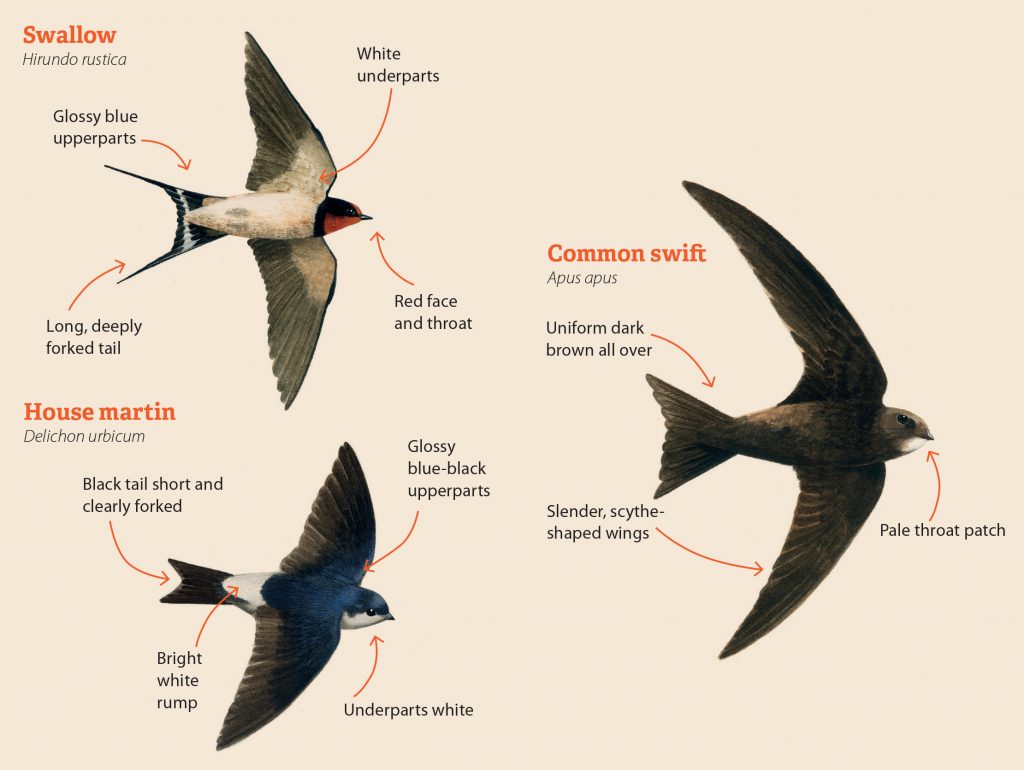Lihou BioBlitz What an incredible day we had at Lihou...
Read MorePleinmont Bird Meeting
13th October 2020, 9-11am
Meeting summary by Julie Davis
The meeting, attended by fourteen members and non-members, started at the Scramble Track car park. We walked a figure of eight, east along the cliff path towards Mont Herault and then back to the Weedy Corridor and the Camping Field.
Quite a few late migrating hirundines (swallows and martins) were seen, especially as the morning warmed up, feeding before heading out over the sea to Jersey and, from there, over to France and south to Africa.
Habitats include dry grassland and scrub adjacent to the cliffs – a good area for chats.
The Weedy Corridor and the Camping Field provide thick hedges with good cover for many birds. The La Société Guernesiaise (LSG) fields provide shelter and food for finches and reed bunting. It is a popular area for birdwatching, particularly during the autumn migration. Many migrant birds make use of the variety of habitats. Autumn is a good time of year to see flocks of finches, like Linnet, across the island.
Chris Mourant, Bird Section Secretary, will lead another walk here this Saturday 17 October from 9.00 am, starting in the Scramble Track car park.

Species seen:
Birds of prey (raptors)
- Buzzard, Buteo Buteo
- Kestrel, Falco tinnunculus
- Sparrowhawk, Accipter nissus
Seabirds and seagulls
- Gannet, Morus bassanus
- Shag, Phalacrocorax aristotelis – UK Red 67 Bird List
- Black-headed Gull, Larus ridibundus
- Great Black-backed Gull, Larus marinus
- Herring Gull, Larus argenteus – UK Red 67 Bird List
- Lesser black-backed Gull, Laurus fuscus
Passerines
Any bird in the order Passeriformes is a passerine. They can be identified by their unique foot structure which sets them apart from other orders of birds. The arrangement of their toes, 3 pointing forward and one pointing backwards facilitates perching, hence why they are known as perching birds or songbirds.
- Blackbird, Turdus merula – the songbird that cannot sing
- Chiffchaff, Phylloscopus collybita
- Dunnock, Prunella modularis
- Goldcrest, Regulus regulus – the UKs smallest songbird
- Goldfinch, Carduelis carduelis
- Greenfinch, Carduelis chloris
- House Martin, Delichon urbica – family Hirundinidae is adapted to aerial feeding
- Linnet, Carduelis cannabina – UK Red 67 Bird List
- Long-tailed Tit, Aegithalas caudatus
- Meadow Pipit, Anthus pratensis
- Pied/White Wagtail, Motacilla alba
- Robin, Erithacus rubecula – Britain’s favourite bird
- Rock Pipit, Anthus petrosus
- Skylark, Alauda arvensis – UK Red 67 Bird List
- Starling, Sternus vulgaris – UK Red 67 Bird List
- Stonechat, Saxicola torquata
- Swallow, Hirundo rustica – family Hirundinidae is adapted to aerial feeding
- Wren, Troglodytes troglodytes
The Crow family or Corvids
These are all passerines, but have been separated out from the general passerine list as they are not only fairly large birds, but are so smart, they are contenders for the smartest birds in the world https://www.sciencemag.org/news/2020/06/humans-these-big-brained-birds-may-owe-their-smarts-long-childhoods
- Carrion Crow, Corvus corone
- Jackdaw, Corvus monedula
- Magpie, Pica pica
Pigeons and Doves
- Stock Dove, Columba oenas
- Wood Pigeon, Columba palumbus
Wading birds
- Grey Heron, Ardea cinerea
- Snipe, Gallinago gallinago
What is the UK Red List?
The UK Red List for birds keeps track of how different species are doing. Any species of bird that is rated red need urgent action. Shockingly, one in four British birds are now on that list, 67 species in total.
Bailiwick Bat Survey
Bailiwick Bat Survey Citizen Science Project 15th April 2021 The...
Read MoreThe Love of Invertebrates
The Love of Invertebrates Andy Marquis Guernsey Wildlife 2nd March...
Read MoreJanuary 2021 Lockdown
Further update: 19th February 2021 This week the States of...
Read More